Rodolpho Parigi: an interview with the virtuoso
Rodolpho Parigi can paint whatever he wants. But the big problem, even for him, is choosing what is really worth representing.
Born and raised in Sao Paulo, Rodolpho Parigi first came to prominence alongside a generation of painters that graduated from Fundação Armando Álvares Penteado in the late 2000s – among them, Marina Rheingantz [here is the link to her contribution to CFA’s ‘At the show with the artist’ section. Ed.] and Ana Elisa Egreja. Through a vivid aesthetic, the artist extracts lessons from nearly all art schools and techniques to create compositions that are unmistakably contemporary. Here he chats with CFA about inspirations, virtuoses, Alter-Egos and influences.
Looking at your practice, from the late 2000s to the present, one can easily identify ‘phases’ – an initial interest in geometry, followed by a more prominent figuration, with different degrees of realism and somehow more glossy in recent years. Your commitment to the study of colour, however, has been a constant thread – non-surprisingly, the majority of your work consists of paintings. This may be a tricky question, but what triggers you to move from one aesthetic pursuit to another? Is the path conscious, or before you realise it you’re on it?
Rodolpho Parigi: As far as I remember, I create from a desire that happens in the very process of painting and drawing.
As a visual, pictorial DJ, I make decisions, either towards something new, or intensifying things that re-occur in my practice. It always happens within the painting and the drawing. I’d say it happens ‘in-between’, halfway consciousness and intuition, in an undecipherable place that is intrinsically connected to the ‘knowhow’, not to the understanding.
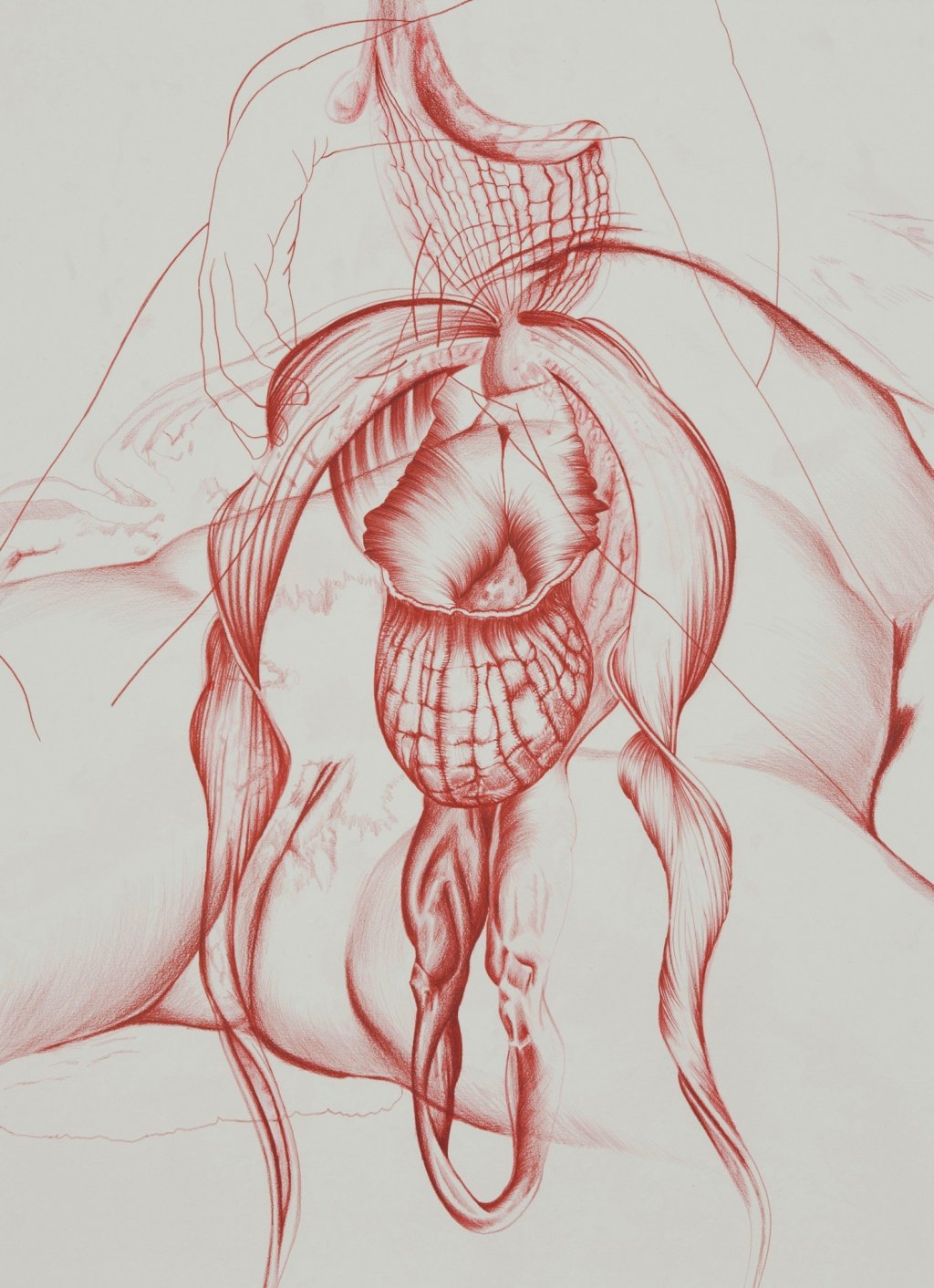
Rodolpho Parigi, Popozinho, 2011, 76 x 56 cm, pencil on paper. Courtesy of the artist. 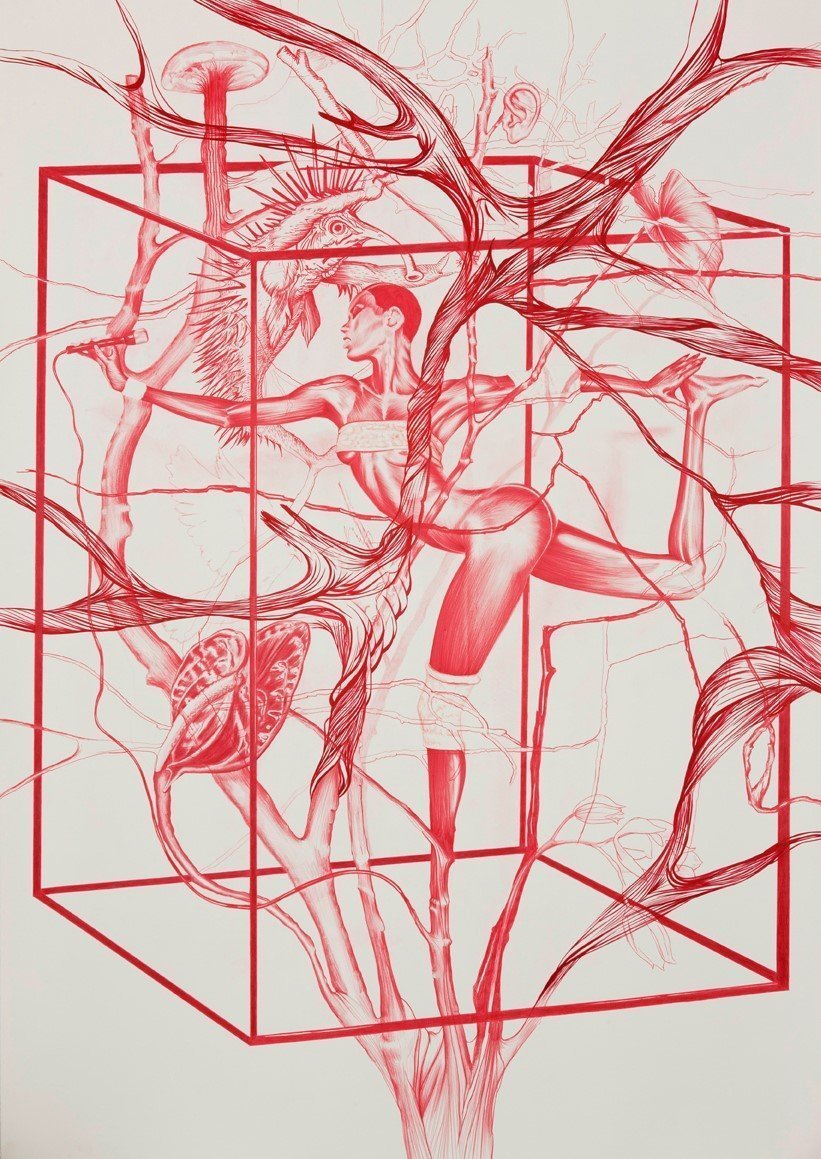
Rodolpho Parigi, Magenta Grace Jones, 2011, 197 x 140 cm, pencil on paper. Courtesy of the artist. 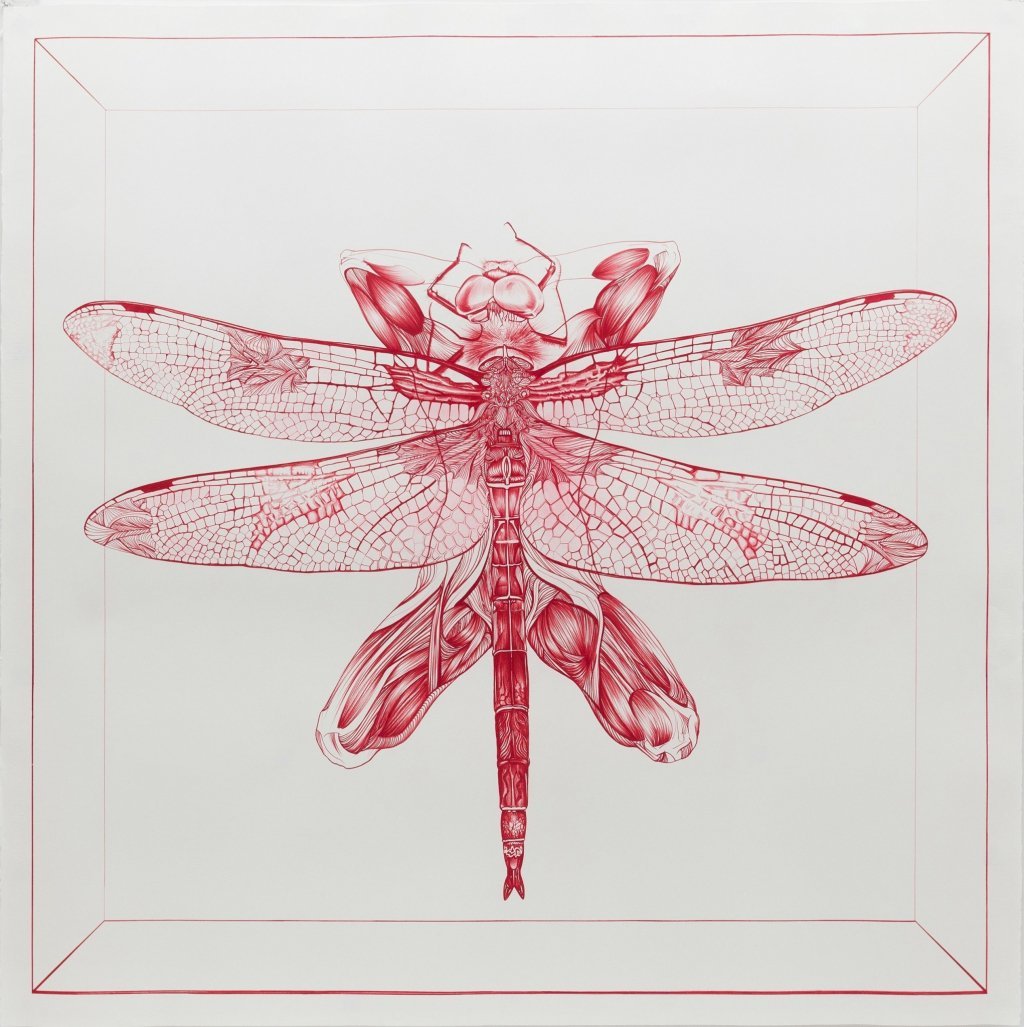
Rodolpho Parigi, Libelulis mois meme, 2011, 140 x 140 cm, pencil on paper. Courtesy of the artist.
Another thread that runs through your practice seems to be your set of interests, or inspirational muses: the human body, art history, eroticism, botanics. That is, the elements that inform your work are a constant, what shifts is your approach to these themes. Can you talk a bit about what drives you to your subjects?
Rodolpho Parigi: Indeed, my muses, or motifs, are always the same, since I’ve started nothing has changed on that matter, it only got more intense. I believe that I’m always dealing with these subjects in a self-referential way, yet not as self-portraits. The various shapes that emerge in my work are part of a personal lexicon that I invented throughout the years and that I use as elements of pictorial construction. When I choose a form, or even a ‘more abstract’ section of the canvas, I’m always thinking of the composition, and how that part will dialogue with the whole. I am a virtuoso, and though I can paint nearly everything that I can think of, it’s often hard to choose what to depict. Thus my process is to eliminate things and concentrate on myself, on the subjects that I want to convey. Then it becomes simple, truthful and real, both for me and for the painting.
Do you paint from photographs, live subjects, memory or a mix?
Rodolpho Parigi: My paintings are created through a confusion of complex processes. The starting point is always memory, followed by projection, printed photographs, then tridimensional models that I place in the studio and at times I also use an I Pad. I am mostly self-taught, but I’ve attended several courses with people that thought and painted canvasses in very different ways; European classical painting teachers, academic painters from São Paulo, painters of Velatura and Alla Prima, observational painters and the contemporary ones at Fundação Armando Álvares Penteado and Museu de Arte Moderna de São Paulo [here is the link to our interview with MASP’s director Adriano Pedrosa. Ed.]. It was in this mix that I’ve started painting. A very Brazilian thing actually.
You mean Brazilian because of this amalgam of information?
Rodolpho Parigi: The amalgam of information, religion and heritage, is a Brazilian trait that has always called my attention. My maternal family comes from Florence whereas my paternal side comes from Porto, in Portugal. Both families came to Brazil in the beginning of the last Century and established themselves in São Paulo. So I was raised in an Italian/ Portuguese/ Brazilian environment, which I believe provided me with the mix of references that is evident in my art. My works are sort of filters of stories that I heard from friends and family.
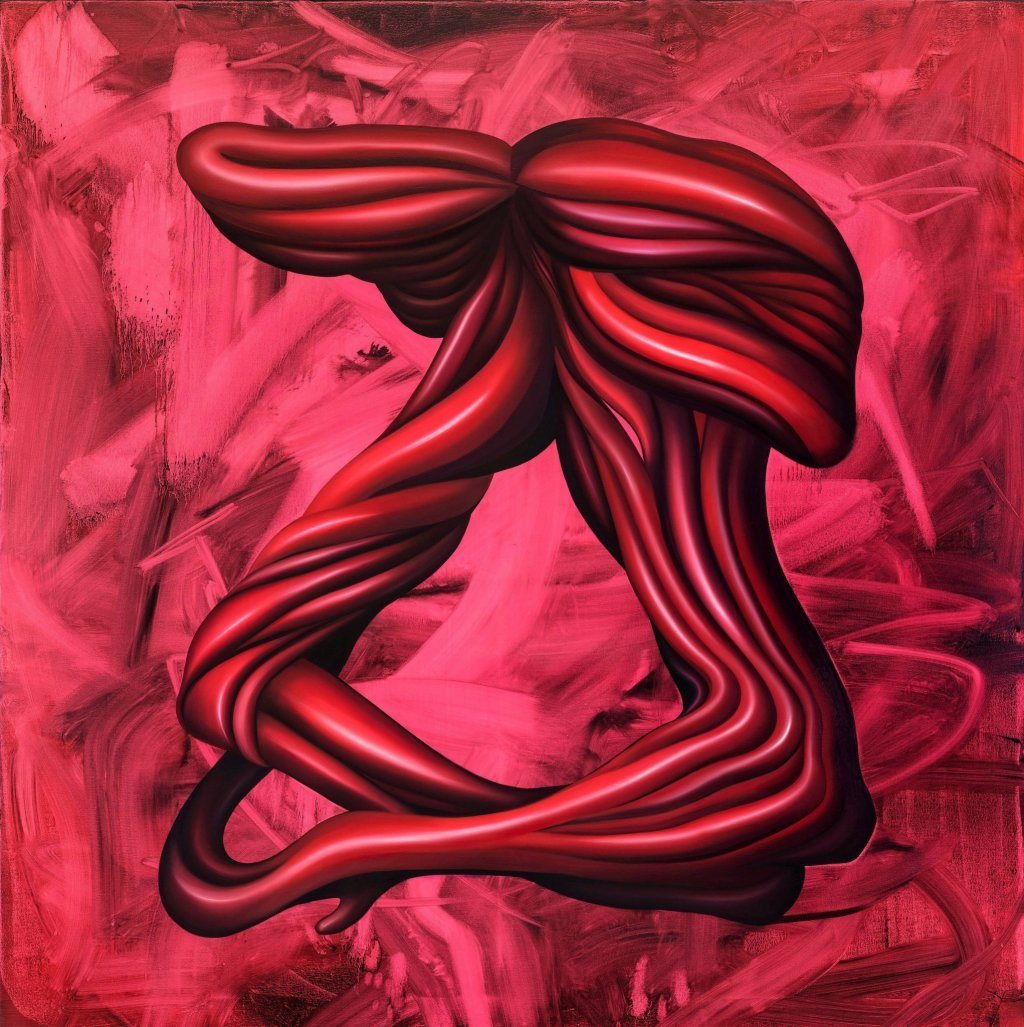
You’ve mentioned previously that you’ve been drawing constantly since your early childhood. Yet you thought you’d become a dancer, or performer, not an artist. Then at one point you gave life to a Trans woman called Fancy Violence. How did she come into being?
Rodolpho Parigi: I have always drew and danced quite a lot as a child. These were, and are, passions that accompany me. But when I came across painting and had access to the Prado museum aged 21, I felt in love with painting after encountering Rubens; I’ve never stopped painting since. Fancy Violence is a drag-persona that became a sort of Alter Ego of the artist Rodolpho Parigi, not the individual. She existed for a short period of time, perhaps some five years between 2013 – 18, and stirred the city (of São Paulo) in a rather violent and strong way. I made several performances in Brazilian institutions and independent venues. Her incarnations were time-based and nocturnal, with a duration of seven hours max. Yet the performance happens in life, beyond the walls of galleries and museums, even if it was born in such environments. She was the very happening, hence the short duration. Fancy is a tableau vivant, a character that I created as a painting/ living sculpture. It was very liberating, and pleasant for me, she’s a character that’s closer to Batman, or to the X-Men, than to Marina Abramovich. Fancy exists in people’s head, she’s the subject of psychoanalysis, Marvel comics or the transgender universe. She chose to be born in the art world, and to die on it as well.
Is Fancy dead? Do you feel like embodying another Alter Ego? For instance, as Fernando Pessoa had various pseudonyms. Or even Monster Chetwynd – née Alalia Chetwynd and who has previously signed Spartacus Chetwynd and Marvin Gaye Chetwynd…
Rodolpho Parigi: I always think of Fancy as another being. It’s a persona, a different body, a different visual identity, different clothes, another life story… That is, she’s closer to being another person than to being a pseudonym. It’s another energy and presence. She exists in a mental plan and at times happens/incarnates in reality. It’s a mix of several references and desires that I’ve had since childhood. I’ll never embody another Alter Ego/persona.
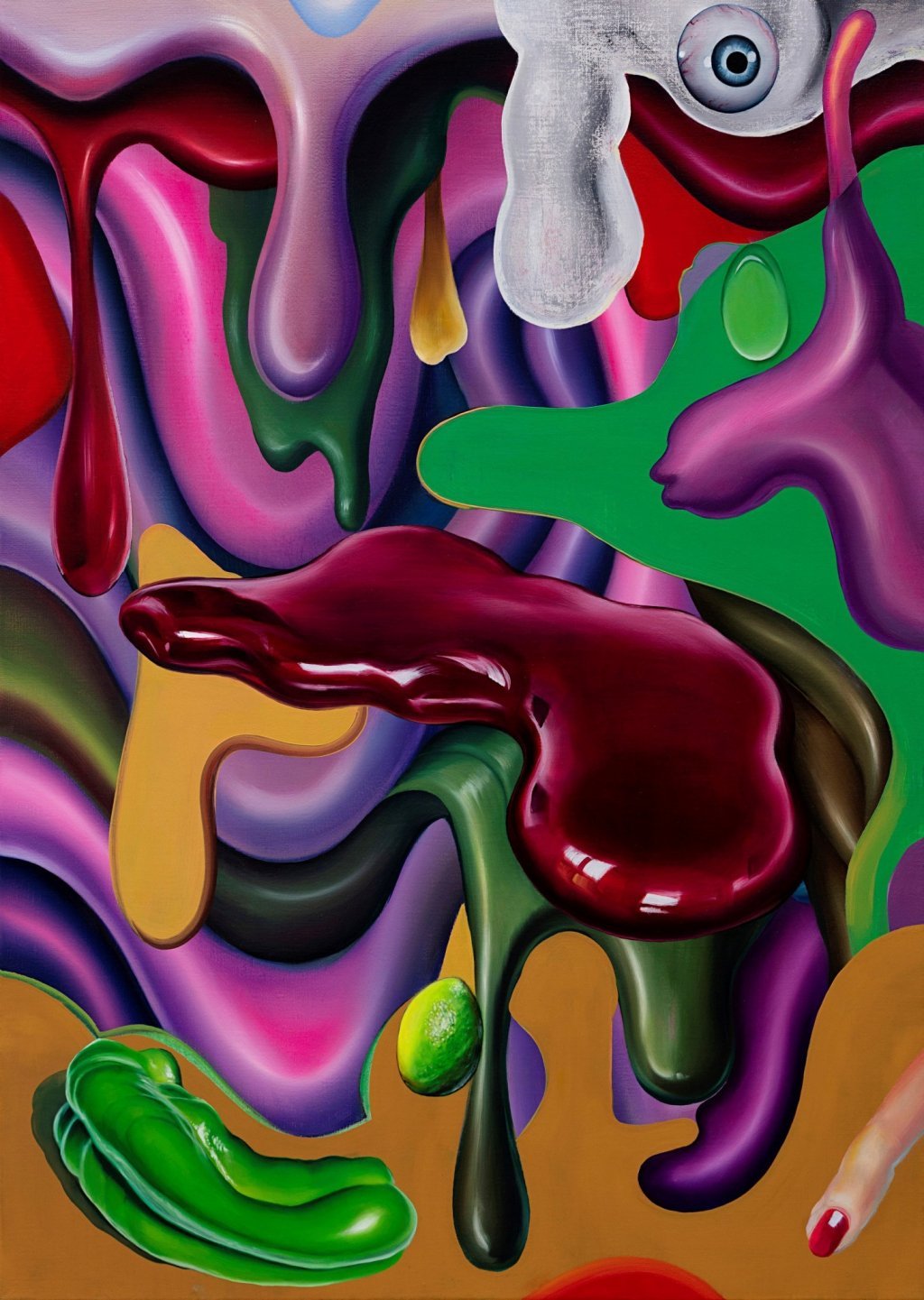
How’s your production during quarantine?
Rodolpho Parigi: I am self-isolating for over four months. It’s also good not to have a deadline to deliver or exhibit works, more time to establish an intimacy with the process of creating. I continue to paint daily. My studio is in a shed, separated from my house through a garden, which makes it a lot easier to work under the current circumstances. The painting inevitably shelters me as a protective cocoon and within it I solve questions regarding my existence and my desires. A free territory, a language which, as of the performance, I feel familiarised with. I spend a lot of time by myself, painting and thinking, the feeling that I get from painting is really positive. And the compositions got more gestural recently, halfway between figuration and abstraction. I started to intensify my gestures. They are calligraphic gestures, but the surface is more pictorial. The movement is there, there’s rhythm to the images, which is something that I’m often trying to convey with my canvases.
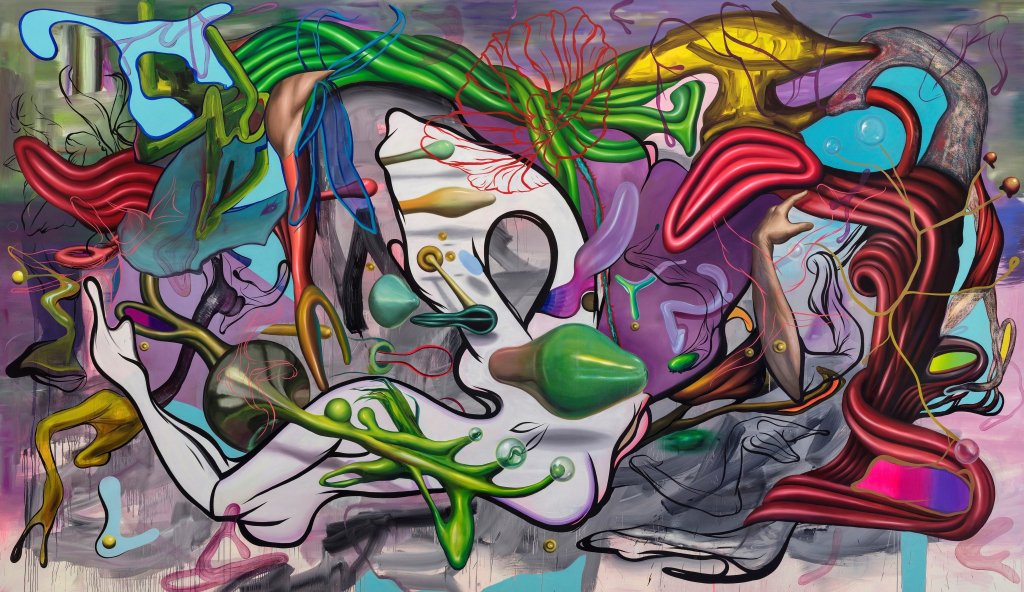
All your works have titles, some more literal ones, such as Blue Head (2019) or Kusama Wig (2018), others establishing a less-obvious relationship with the composition, like Black Dimanche Saturday Metal (2019) or Olive Blanka Volumen (2018). How does this process happens? Who’s the chicken and who’s the egg?
Rodolpho Parigi: In the great majority of times, the work precedes the title, but the theme is sometimes first. My works deal with a very personal mental universe which I express pictorially in drawings, collages and paintings – mostly. Although my aesthetic is rather contemporary, my creative process is grounded in the following traditional painting genres: portraiture; landscape; still-life; genre painting or scenes; historical themes; mythological themes; religious themes.
When I’m creating I mix genres, and through my ‘way’ or ‘manner’, I conceive the work, so everything has my ‘style’. I’m a sort of filter for these genres. For me, everything is inserted in a broader history, a private universe, nearly a personal lexicon. It’s about a self-referential work, not self-portrait. Therefore the chicken and the egg are on the same place. There’s a good confusion in terms of parenthood.
Two of my favourite artists are Shakespeare and Bowie, both of whom represented ideas in a very personal, yet strangely familiar and universal way.
That’s a good link to our last question, which is a bit ‘over-asked’, yet offers an interesting insight to an artist’s universe. If you could choose any work to have at home, what would that be?
Rodolpho Parigi: Any sculpture by Jean Arp.
August 20, 2020
